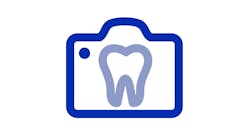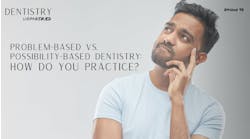by Gordon J. Christensen, DDS, MSD, PhD
In this monthly feature, Dr. Gordon Christensen addresses the most frequently asked questions from Dental Economics readers. If you would like to submit a question to Dr. Christensen, please send an email to [email protected].
Question ...
Recently, I have read and have become upset by several "scientific" papers that state conclusions I know from my experience are not clinically correct. How do such papers get into the peer-reviewed literature?
Answer from Dr. Christensen ...
You have asked a question which points to the major reason Clinical Research Associates (CRA) was initiated 27 years ago. How do you and I separate truth from nontruth about a product or a technique? Over my career to date, answering this question has become increasingly difficult due to commercial funding of research, confusion caused by the many new concepts and materials that have come onto the market, payment of researchers and speakers by manufacturers, and funding of "commercially oriented product-evaluating groups" by the very companies they are evaluating. At this time, I am sorry to say that I see more untruths in dental literature and advertising than I see truth. How does this happen?
Peer review is a standard protocol that has long been used in scientific research. During legitimate peer review, unbiased people who are recognized to have expertise in the subject of the research review the research in question before acceptance for publication. Reviewers should have significant expertise and experience in the specific subject of the research. There should be several mature reviewers for any project. The reviewers should not communicate with one another about the research being evaluated. Reviewers should not have commercial interests in the research they are reviewing. Most scientists would agree that the reviewers should not know the names of the researchers they are evaluating.
After several decades of being a peer reviewer for numerous national and international dental journals, I am frustrated to say that, with a few exceptions, peer review in 2003 is not working. Articles are in the peer-reviewed literature this very month that violate nearly all of the characteristics listed above. At this time, it is extremely difficult for a practitioner to determine fact from fantasy in the dental literature. I read and review 25 journals per month, and I find only a few articles per month that I feel are valid contributions to my knowledge. In my opinion, the entire system of peer review in dentistry needs immediate revision. In the meantime, what can we do? When reading an article, I suggest the following:
1) Observe the name(s) of the author(s). Do you know these people? Have they been trustworthy in the past? Do you know if they have any financial association with a company? Are they selling the product reported in the paper?
2) Is there any indication that a company funded the research? If so, be wary of the results.
3) Is there anything new that is reported in the paper? The vast majority of papers in the dental literature are repeats of previous research or old techniques. If nothing is new, why are you reading it?
4) Beware of the paper with too many references. It is very easy to get a computer printout of all of the papers on any subject, but who cares? A few related, pertinent references are adequate. We should be interested in what the author of the paper has to say, not everybody else since the beginning of time. A brief historical review in the discussion section of the paper is more than enough.
5) Is the paper written on a minor point in a big subject area? Sometimes, a researcher will accomplish research on one part of a large subject and report conclusively on that minor point. The conclusions are often misleading. An excellent example was peer-reviewed research on the in-vitro retention of crowns cemented with polycarboxylate cement. The positive results were impressive, statistically significant, and scientifically sound. The only problem was that the cement dissolved away after a few years of use, releasing many of the crowns.
6) Are the results significant clinically or just statistically? Many times, statistical significance can be shown when clinical significance is nil.
7) Is the research project an in-vitro project that is supposed to predict what happens in the mouth? If so, be careful. Some in-vitro projects have produced results that are diametrically opposed to what happens in the mouth. Microfill resins are an excellent example. The low wear of microfills in the mouth is well documented clinically, but they wear significantly more than hybrids in some types of in-vitro wear testing.
8) If you are reading an advertisement, has the product been evaluated by a commercial, "for profit" product-evaluation group, and has that group given it a positive rating? If so, better be wary of the endorsement. Use the national publication, Consumer Reports, as a prototype. You do not see that group providing endorsements of products, yet the information is available to interested parties.
If, after checking all of the above criteria, you still have a few legitimate papers or advertisements to read each month, you are fortunate. I am sorry to say that in my opinion, our current system of peer review is not accomplishing its intended purpose. Are there other alternatives?
Some persons, stating that the Clinical Research Associates Newsletter is not peer-reviewed, have voiced criticism. In actuality, before publication, recognized world authorities in the specific subjects of the reports stringently review the CRA reports. These reviewers include practitioners who have used the product, the inventors of the product, researchers, and other experts in the specific product area. Additionally, the manufacturers are always contacted before publication to reconfirm all pertinent facts about the product and to allow them the opportunity to critique the report before it is published. Subsequently, over 100,000 practitioners read the Newsletter and submit postpublication critiques of the research, products, and concepts. Importantly to unbiased research and reporting, no money changes hands when a product or technique is published in the Newsletter.
CRA is the only non-profit, independent dental research organization in operation at this time.
Question ...
I am confused about the effectiveness of bonding materials to strengthen teeth when used before cementing ceramic or resin-based composite restorations. I have heard speakers state that bonding resin restorations into place produces greater strength in the tooth than the strength of the uncut tooth. If I bond a direct or indirect Class II MOD resin or ceramic inlay restoration into a tooth, will the initial strength of the tooth be reproduced?
This question is one that has had numerous contradictory papers published on it over the years. There is no question that enamel bonding using the acid-etch procedure produces a bond between the enamel and the resin. Enamel bonding has been proven by the clinical success of ceramic veneers placed over etched enamel surfaces. However, when resin is bonded to dentin, the bond is less than that produced with enamel, and the longevity of the bond is questionable. Inlays have only a peripheral band of enamel surrounding the restoration, and the remainder of the bond is on dentin. As an example, a recent study (Journal of Prosthetic Dentistry 2003; 89; 551-7, St-Georges et al. Fracture resistance of prepared teeth restored with bonded inlay restorations) showed that bonded resin or ceramic inlays did not strengthen teeth.
However, you are right, many speakers and writers state that teeth are strengthened by such restorations. In fact, in some of the current "cosmetic" dental publications, there are examples of clinicians suggesting the placement of large, bonded-ceramic or resin inlays, while leaving small pieces of unsupported tooth structure without coronal coverage. They often make a point of the strength of the "bond," and the inference is that the tooth is now restored to its original strength. Long-term clinical research and clinical experience will not support that claim. My own clinical experience certainly shows that small, unsupported pieces of tooth structure soon break off. The expensive restorations must be replaced, and the patient is generally the loser.
Ceramic or resin-based composite onlays that cover cusps are quite different. If the small, unsupported remaining pieces of enamel and dentin are covered occlusally with restorative material, the long-term service potential of the restoration is enhanced greatly. I have become very aware of this situation, because of numerous restorations in my own practice that have failed because I resisted covering the cusps of teeth when more than one-half of the cusp-tip to cusp-tip distance of the tooth was removed.
The answer to your question — Place direct resin restorations in small lesions, small inlays where indicated, and onlays where the strength of the remaining tooth structure is questionable.
Two recent PCC videos demonstrate clinical information on the preceding topic. They will be enjoyable and I guarantee they will help your practice — Item V4797, "Dr. Christensen's Most Frequent Failures and How to Avoid Them" (VHS or DVD), and item C501B, "Predictable Long-Lasting Class 2 Resin Restorations." For more information, contact Practical Clinical Courses at (800) 223-6569, fax to (801) 226-8637, or visit www.pccdental.com.
Dr. Christensen is a practicing prosthodontist in Provo, Utah. He is the founder and director of Practical Clinical Courses, an international continuing-education organization for dental professionals initiated in 1981. Dr. Christensen is a co-founder (with his wife, Rella) and senior consultant of Clinical Research Associates, which, since 1976, has conducted research in all areas of dentistry and publishes its findings to the dental profession in the well-known CRA Newsletter. He is an adjunct professor at Brigham Young University and the University of Utah. Dr. Christensen has educational videos and hands-on courses on the above topics available through Practical Clinical Courses. Call (800) 223-6569 or (801) 226-6569.
Dr. Christensen's views do not necessarily reflect the opinions of the editorial staff at Dental Economics.





